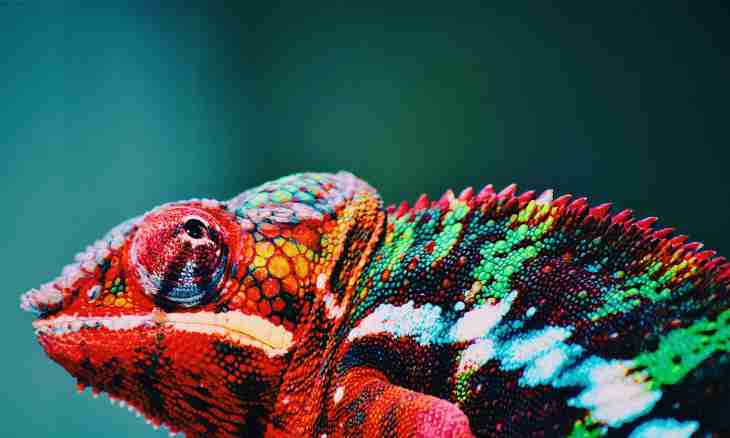To mask, changing the coloring, both fishes, and insects, and reptiles can. It is cardinal to one of the most known lizards capable to change coloring of the body in any given situation, the chameleon is.
Instruction
1. Chameleons are inhabitants of the hot continent under the name Africa. Now they are widespread also in the Southern India, and in Southern Europe and also on Madagascar, in Hawaii and on Sri Lanka. A chameleon – a unique lizard! Not only that it has improbable ability to change color of the skin, so also his eyes covered accrete centuries lead own life, turning in different directions, independently of each other. Besides these lizards for hours can be on branches of trees, expecting the victim. As soon as any given small insect gets in the field of vision a chameleon, it immediately, without deliberating, it is enough with the long and sticky tongue.
2. The broad popularity of this reptile was brought by its unique ability in the miracle way to change coloring of the skin. It is curious that the lizard up to 30 cm long is able to mask skillfully, becoming red, black, blue, yellow. Scientists, researching chameleons, tried to find out as well as why these lizards change color of the skin. It was initially supposed that chameleons just like to adapt to the background surrounding them, considering it a duty. This assumption was incorrect.
3. According to modern researches, chameleons I change color of the skin depending on the state: the mood of an animal can influence change of color, it can be reactions to fear or joy, it can depend also on ambient temperature. Zoologists found out that color of the body changes a chameleon thanks to special cages – chromatophores. The fact is that skin of this lizard is quite transparent therefore also the cages containing pigments of different flowers are well traced.
4. Grains of chromatophores contain grains of several pigments at once: red, yellow, black and dark brown colors. If pieces of these cages begin to be reduced, then there is a redistribution of pigments which concentration sharply increases. In this case skin of a reptile becomes light (for example, yellowish or white). If one of dark pigments is reduced, then skin of a chameleon becomes dark. It is curious that such reduction happens at the different levels, as allows to lead combinations of any given pigments to absolutely different shades.
5. To change skin color the lizard needs to spend no more than two seconds! Long time researchers assumed that chameleons change color only for masking: for example, having painted in green color, the lizard can hide in a grass or in foliage. However this assumption turned out to be true only half. The fact is that chameleons change the color not only for masking, but also for the personal purposes. For example, some chameleons living in hot Africa gain black skin color in the morning. It allows them to attract to itself beams of the sun. In the afternoon they become light not to suffer from a heat. These lizards use various motley colors in the mating dance to attract the partner. It is scientifically proved that these animals do not pay attention to the background surrounding them at all. It is curious that in the course of evolution some species of chameleons in general learned to copy color of the enemies – birds and snakes.

